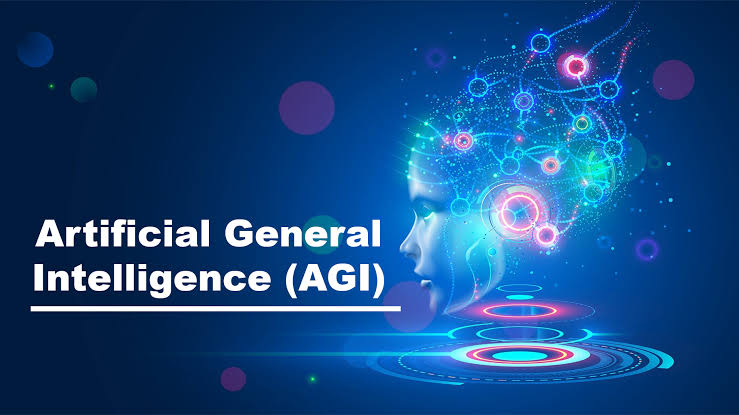What you need to know about Artificial General Intelligence
It was, is, and will always remain to be, the dream and or goal of many researchers, technologists and even philosophers, about the development of artificial intelligence.
In other words, this motivation is usually the objective to which considerable parts of this effort are devoted —the creation of Artificial General Intelligence (AGI). As current narrow AI, is applied for some specific area such as image processing and voice recognition or transcribing the languages, AGI’s vision is to develop an artificial intelligence that will have the ability to reason for and excel in any field like a human brain.
AGI Concept, Definition
The concept of AI is Similar to the ‘Artificial General Intelligence’ defined as a machine that is capable of performing any intellectual task a human being is capable of. This entails not only such competencies as the problem-solving, calculating ability, but also such factor as being emotionally literate, ability to conceive, and critical judgment which stems from the learner’s experience. This vision has not been to invent devices that can perform an operation in a better way, or in lesser time than what a human being would take; rather it consists in creating entities that have the ability to reason and think the way humans do.
The notion of AI is derived from mythological kinds of intelligence which became an idea since the distant epoch. Notable theoreticians like Turing while doing the Turing test and McCarthy, who named the field as artificial intelligence, set up the picture of mimicking human thinking in machines. The Turing Test, in particular, proposed a criterion for intelligence: I am seeing this in a way that if a created machine is capable of replying like a human it then will be intelligent. This test specifically is concerned with language skills while AGI is planned to support functionalities that can be regarded as pertaining to most aspects of intelligence in people.
The Challenges in Achieving AGI
One of the significant challenges in achieving AGI is understanding and replicating human cognitive processes. Human intelligence is not just about processing information; it involves perception, reasoning, emotions, and consciousness. Cognitive science and neuroscience provide insights into how the brain functions, but translating these complex processes into algorithms and computational models is a monumental task.
AGI requires the integration of various fields, including machine learning, natural language processing, robotics, and cognitive science. Current AI systems are typically specialized and excel in narrow domains. For instance, deep learning models can outperform humans in image recognition or playing specific games, but they lack the generalization ability to apply this knowledge to different contexts. AGI must bridge these isolated successes into a coherent, unified system.
Another challenge is the creation of machines that can understand and interpret context. Human beings possess an inherent ability to grasp contextual nuances and apply them to new situations. This involves not only the recognition of patterns but also the understanding of subtleties and implications. Developing algorithms that can handle such complexity is essential for AGI.
The Pathways to AGI
Several approaches are being explored to move closer to AGI. One promising avenue is the development of neural networks that mimic the brain's structure and function. Deep learning, a subset of machine learning, has made significant strides in this direction. By creating multi-layered networks that can learn from vast amounts of data, researchers hope to approximate some aspects of human cognition.
Another approach is symbolic AI, which focuses on the manipulation of symbols and rules to represent knowledge. This method, which dominated early AI research, has seen a resurgence with the advent of hybrid models that combine symbolic reasoning with neural networks. Such models aim to leverage the strengths of both approaches: the adaptability of neural networks and the interpretability of symbolic AI.
Reinforcement learning, which involves training agents to make decisions by rewarding desirable behaviors, is also a key area of research. This method has shown promise in developing systems that can learn from experience and improve over time, much like humans do. By simulating environments and allowing agents to explore and learn, researchers are making strides toward more adaptable and autonomous systems.
Ethical and Societal Implications
The pursuit of AGI is not without its ethical and societal implications. As machines become more capable and autonomous, questions arise about their impact on employment, privacy, and security. The potential for AGI to surpass human intelligence raises concerns about control and alignment with human values. Ensuring that AGI systems act in ways that are beneficial and aligned with societal norms is a critical challenge.
Moreover, the development of AGI brings up philosophical questions about consciousness and identity. If a machine were to achieve human-level intelligence, would it possess consciousness? How would we define and measure such a state? These questions delve into the nature of existence and the essence of what it means to be human.
The Future of AGI
The timeline for achieving AGI is uncertain. Some experts predict that it could happen within a few decades, while others believe it may take much longer, if it is achievable at all. Despite this uncertainty, the quest for AGI continues to drive innovation and exploration in the field of artificial intelligence.
As we advance toward AGI, it is crucial to consider the broader implications of creating machines with human-level intelligence. This involves not only technical and scientific challenges but also ethical, societal, and philosophical considerations. The journey toward AGI is as much about understanding ourselves and our place in the world as it is about building intelligent machines.
